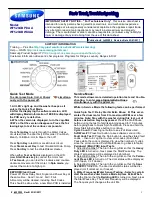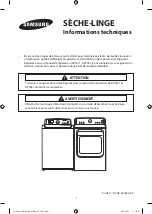
Electrical connection
142
All electrical work must be carried out by a suitably qualified
electrician in accordance with local and national safety regulations.
– The electrical installation must comply with current local and na-
tional safety regulations (DIN VDE 0100 in Germany/BS 7671 in the
UK).
– The connection to the power supply must comply with national reg-
ulations. The socket must be accessible after the machine has
been installed. An electrical safety test must be carried out after in-
stallation and after any servicing work.
– If the machine is hard-wired to the power supply, a power switch
with all-pole isolation must be installed. The power switch must be
designed to operate at the rated current, must ensure a 3 mm gap
between all open contacts, and must be able to be locked in the off
position.
– Equipotential bonding must be performed.
– The rated loads are specified on the data plate and in the circuit
diagram supplied with the machine.
– For increased safety, it is recommended to protect the machine
with a suitable residual current device (RCD) with a trip current of
30 mA.
– If replacing the power cable, use only original replacement parts
from the manufacturer or a suitable cable with core cable ends.
Further notes on electrical connection are given on the Installation
diagram supplied with the machine.
The machine must only be operated with the voltage, frequency and
fusing shown on the
data plate
.
Depending on country this machine
can be converted to a different
type of power supply
in accordance with the conversion diagram
and wiring diagram supplied.
A
data plate
can be found on the inside of the door and another on
the back of the machine.
The wiring diagram is supplied with the machine.
Equipotential bonding connection
There is a screw connection point marked
at the back of the ma-
chine, to which additional equipotential bonding can be connected if
required.
















































